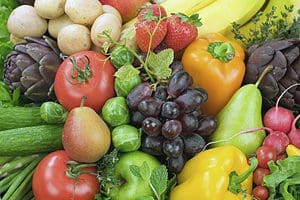by Dr Sandra Cabot
If you have been diagnosed with a fatty liver it is vital that you take a pro-active approach, otherwise the condition will progress and your liver function will deteriorate.
Fatty liver is closely associated with Syndrome X (insulin resistance) and an increased risk of type 2 diabetes.
Luckily fatty liver disease is reversible; the liver is able to repair itself and fatty deposits can be removed from within it. The eating principles described below will help to reverse a fatty liver and also help you lose weight and reduce your risk of type 2 diabetes.
1. Follow a low carbohydrate diet
This means avoid sugar and foods containing added sugar. You must also greatly reduce your intake of grains and cereals (wheat, rye, oats, barley, corn, rice) and starchy vegetables (potatoes). Carbohydrate rich foods raise blood sugar and insulin levels and increase the deposition of fat inside the liver. There is plenty of carbohydrate and fibre in vegetables, fruit, legumes, nuts and seeds. Grains and cereals are not an essential part of the diet.
2. Increase the amount of raw plant food in your diet
Raw vegetables and fruits are the most powerful liver healing foods. They help to cleanse and repair the liver filter, so that it can trap and remove more fat and toxins from the bloodstream. Eat seven servings of vegetables each day (both raw and cooked) and two servings of fruit. An example of a serving size is one apple or half a cup of raw salad vegetables.
3. Eat protein with every meal
Good sources of protein include eggs, fish, poultry and lean red meat. These foods would preferably be free range or organic. Fresh and canned fish are both acceptable (avoid smoked or fried fish). Whey protein powder, unflavoured acidophilus yoghurt and certain cheeses such as feta, cottage, ricotta, parmesan and pecorino are also a good source of protein. If you are vegetarian you can combine legumes, raw nuts and seeds together at the one meal to obtain sufficient protein. Consuming protein at each meal helps to reduce hunger and cravings.
4. Eat the right fats
Avoid all deep fried food, very fatty meat, preserved meat, partially hydrogenated vegetable oil, margarine and cheap cooking oil. The healthiest oils to include in your diet are extra virgin olive oil, cold pressed macadamia oil and cold pressed coconut oil. Beneficial fats are also found in avocados, deep sea fish, raw nuts and seeds.
5. Avoid huge meal sizes
Do not eat very large meals, as this overworks your digestive tract and puts a huge strain on the liver. Overeating promotes heartburn, reflux and bloated tummies.
With the right dietary modifications, fatty liver can successfully be reversed.
Remember that it generally takes quite some time to get a fatty liver, so it might take a little while to get your liver back to its healthy best – stay focussed and remember how important a healthy liver is to your health and wellbeing.

